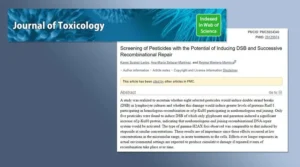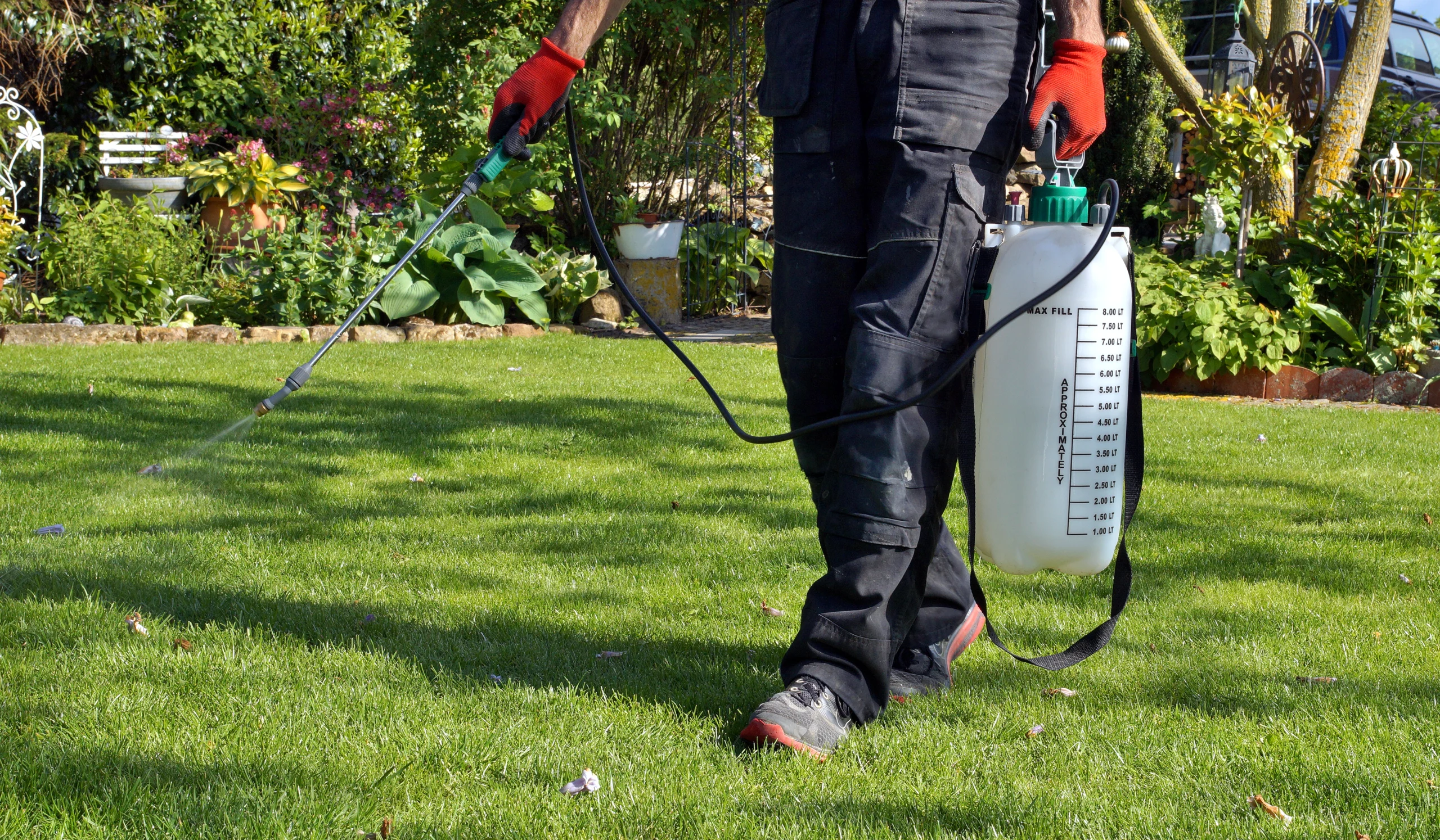
Scientists investigating the impact of pesticides on the DNA in lymphocytes (a type of white blood cell) found that glyphosate may cause a type of DNA damage that can lead to cancer. The finding is particularly important in that glyphosate has been linked in several studies to non-Hodgkin lymphoma, a type of cancer that affects lymphocytes.
Glyphosate DNA Damage and Double Strand Breaks
The researchers tested eight pesticides and found that glyphosate was among four chemical compounds that “showed a significant effect” on the number of lymphocyte cells with a type of DNA damage known as a double-strand break (DSB). Double-strand breaks can lead to alterations in chromosomes that are characteristic of non-Hodgkin lymphoma.
What is a double-strand break? Let’s start with the word “strand.” You’ve probably seen diagrams of the structure of DNA, the complex molecule found in all cells that many have compared to an instruction book for building and operating each person’s body. Genes and chromosomes – the “paragraphs” and “chapters” in the genetic “how to” book – are made of DNA. Models of DNA usually show two chains twisted around each other with stair steps joining them like a spiral staircase. Those chains are the “strands” that are severed in a double-strand break.
As you might imagine, when those strands break, it may result in the “stairs” falling apart too. That is a problem because those stairs are made up of four molecules that serve as the “letters” – adenine (A), cytosine (C), guanine (G), and thymine (T) – that spell out the genetic instructions telling the body what to do and how to do it. Those chemical letters, known as bases, are the basic building blocks of DNA.
In a double-strand break, a significant number of those letters, along with the part of the strand holding them in place, can get separated from the “staircase.” The DNA breaks down. Making matters worse, the main mechanism that the cell uses to repair DSBs, a series of chemical reactions called non-homologous end joining (NHEJ), can’t fully repair the damage.
The NHEJ mechanism, as the authors of this study mention, is “known to be prone to error.”
“Uncontrolled cell proliferation* is a hallmark of cancer…. multiple mutations that accumulate in somatic cells over many years eventually remove an elaborate set of controls that would otherwise prevent cancer cells from dividing unchecked.” [* Proliferation is the process of cell growth and division.] — Katherine Hyland, Professor of Biochemistry & Biophysics, University of California, San Francisco Institute for Human Genetics
Finding Double-Strand Breaks in DNA After Herbicide Exposure
Evidence of glyphosate DNA damage comes in the form of proteins that are involved in the NHEJ repair process. The proteins are the “tools” left at the DNA repair worksite that provide evidence that a double-strand break has occurred.
In this study, the researchers were looking for two key proteins. One is named gamma-H2AX. The location of gamma-H2AX at the NHEJ repair site is called a gamma-H2AX focus (plural foci). Another protein involved in the DNA repair process is called p-Ku80. Both proteins are considered “biomarkers” (biological evidence) for double-strand breaks.
The researchers exposed lymphocyte cells to varying doses of each of eight pesticides. Five pesticides induced double-strand breaks, but only two induced significant increases in p-Ku80: glyphosate and the chemical paraoxon.
Paraoxon is a metabolite of one of the most dangerous pesticides in the world – parathion. When parathion is ingested, it is chemically transformed (metabolized) into paraoxon in the body. Paraoxon is even more toxic than parathion. Glyphosate is clearly not in good company here.
According to the study, “[g]lyphosate was found to significantly induce the presence of p-Ku80 in a dose-dependent manner.” In other words, increasing the dose appeared to increase the glyphosate DNA damage.
The degree of damage to the DNA was classified according to the percentage of cells that contained no gamma-H2AX foci (undamaged), between 1 and 10 H2AX foci (moderate damage), or more than 10 H2AX foci (severe damage). The authors reported that “glyphosate and paraoxon showed an increase of cells with more than 10 foci, related to the concentration [the dose of glyphosate the cell received].” Larger doses were tied to more gamma-H2AX foci. Each gamma-H2AX focus represents a double-strand break.
“Chromosomal translocations are a hallmark of non-Hodgkin lymphoma (NHL) and can arise as a consequence of misrepair of DNA double-strand breaks.” — Deidre A. Hill et al., “Risk of non-Hodgkin lymphoma (NHL) in relation to germline variation in DNA repair and related genes,” Blood (2006);108: 3161-3167. (Note: A definition of chromosomal translocation can be found at reference.com.)
In discussing their results, the authors explain that the level of damage they observed may have been enough to induce a form of non-homologous end joining, which has been demonstrated to produce chromosomal alterations that are “of great concern in the development of leukemia, lymphoma, and secondary cancers.” The authors stress that the effects they observed occurred in low concentrations of the pesticides and over relatively short time periods. This, they suggest, raises the possibility that “longer exposures in actual environmental settings” could produce “cumulative damage” over time.
It is this cumulative damage that is thought to be behind the accumulation of mutations that leads to cancer.
Summary Information
Title
Screening of Pesticides with the Potential of Inducing DSB and Successive Recombinational Repair
Authors
Karen Suárez-Larios, Ana-María Salazar-Martínez, and Regina Montero-Montoya
Department of Genomic Medicine and Environmental Toxicology, Institute for Biomedical Investigations, National Autonomous University of Mexico, Post Office Box 70228, 04510 Mexico City, Mexico
Journal
Journal of Toxicology (2017). Published 10 October 2017
Funding
This work was realized by funds from the Universitary Program to Support Science and Technology (PAPIIT, Project no. IN203011-3) and a fellowship by Consejo Nacional de Ciencia y Tecnología (no. 220284) for Karen Suárez-Larios, M.S., a student at the Ph.D. Program of Biological Science,
UNAM. The authors acknowledge the valuable comments of Chemist Guillermina Vázquez and Biologist Juan Pablo Pánico.
Contact Wisner Baum today to get started with our team.


